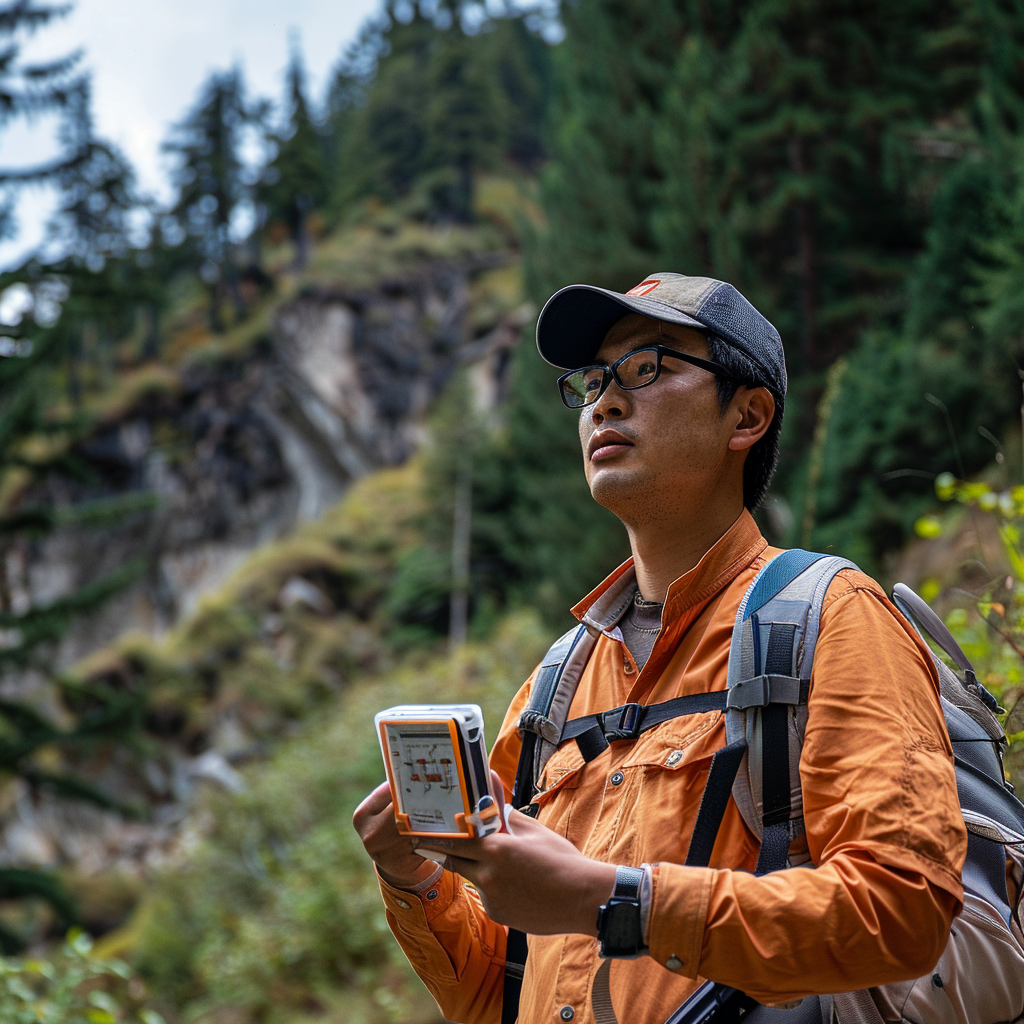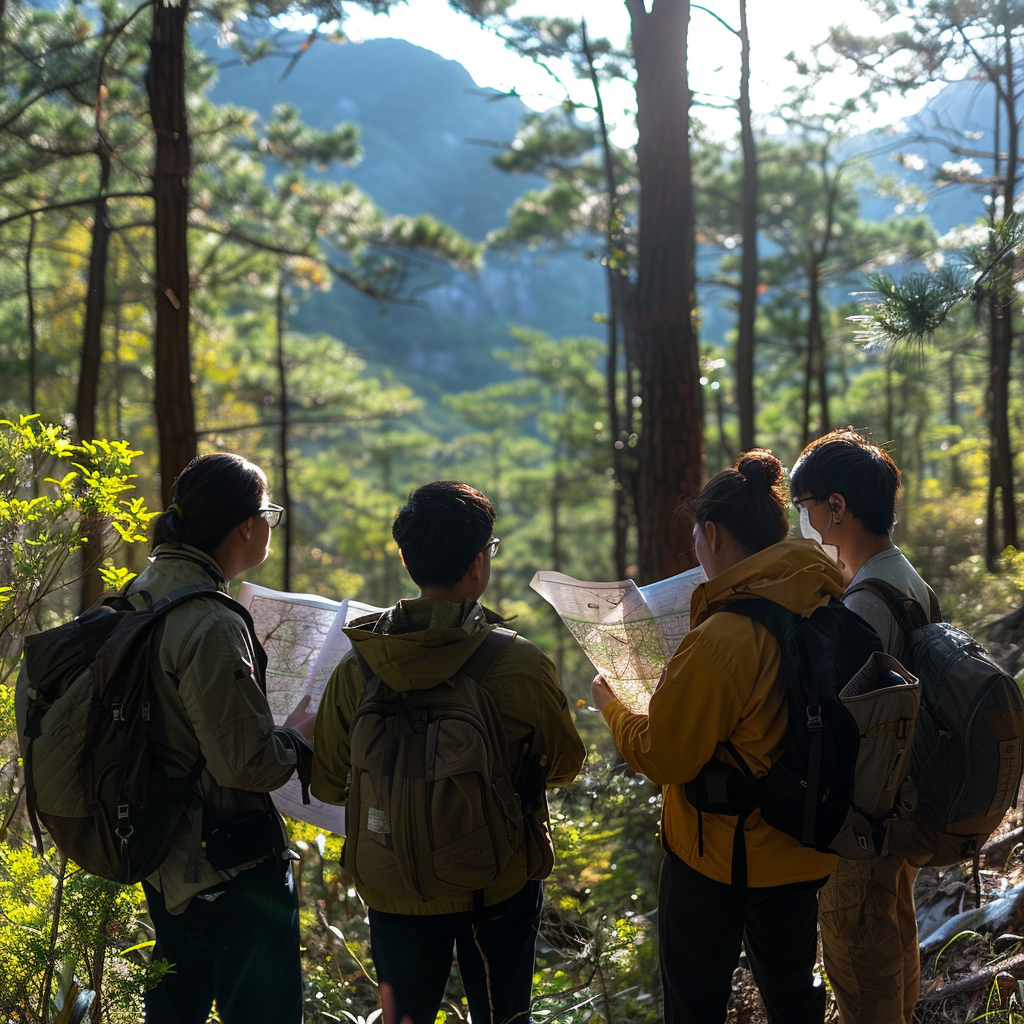发布:2025-08-02 浏览:0
森林资源资产评估是对林地、林木、森林景观等资产价值的科学评定,需结合森林的生长特性、经济用途及生态价值,选择适配的评估方法。不同方法适用于不同的森林类型(如用材林、经济林、防护林)与评估目的(如转让、抵押、征收补偿),其核心是通过规范的测算流程,客观反映森林资源的经济价值与生态价值,为资源开发、保护及交易提供依据。
Forest resource asset assessment is a scientific evaluation of the value of assets such as forest land, trees, forest landscapes, etc. It requires the selection of appropriate assessment methods based on the growth characteristics, economic use, and ecological value of the forest. Different methods are applicable to different forest types (such as timber forests, economic forests, and protective forests) and evaluation purposes (such as transfer, mortgage, and expropriation compensation). The core is to objectively reflect the economic and ecological value of forest resources through standardized calculation processes, providing a basis for resource development, protection, and trading.
市场法是依托市场交易数据的评估方法,适用于交易活跃的森林资源类型。该方法通过选取近期同类森林资源的交易案例(如相同林种、林龄、立地条件的林地流转案例),对比分析案例与评估对象的差异(如地理位置、林木蓄积量、交通条件),调整交易价格后确定评估值。操作中需确保案例的可比性:用材林需对比林分质量(如胸径、树高、密度)、采伐年限,经济林需关注品种(如油茶、核桃)、产量、盛产期剩余年限,防护林则侧重生态功能指标(如水源涵养能力、固碳量)。案例选取需在同一区域(如县域范围内),时间间隔不超过 3 年,差异调整幅度通常不超过 30%,避免因地域差异、时间跨度大导致评估偏差。市场法的优势是直观易懂,结果易被交易双方接受,但在交易案例少的偏远地区或特殊林种(如珍稀树种)评估中适用性有限。
The market approach is an evaluation method based on market transaction data, applicable to forest resource types with active trading. This method selects recent trading cases of similar forest resources (such as forest land transfer cases with the same forest type, age, and site conditions), compares and analyzes the differences between the cases and the evaluated objects (such as geographical location, forest volume, and transportation conditions), adjusts the trading price, and determines the evaluation value. In operation, it is necessary to ensure comparability of cases: timber forests need to compare stand quality (such as breast height diameter, tree height, density) and harvesting years, economic forests need to pay attention to varieties (such as oil tea and walnuts), yield, and remaining years of the high-yield period, and protective forests focus on ecological function indicators (such as water source nutrient capacity and carbon sequestration). The case selection should be within the same region (such as within a county), with a time interval of no more than 3 years and a difference adjustment range of usually no more than 30%, to avoid evaluation bias caused by regional differences and large time spans. The advantage of market approach is that it is intuitive and easy to understand, and the results are easily accepted by both parties in the transaction. However, its applicability is limited in remote areas with few transaction cases or in the evaluation of special forest species (such as rare tree species).
收益法聚焦森林资源的未来收益能力,适合有稳定经济产出的森林资产。通过测算森林在经营期内的预期收益(如用材林的木材销售收入、经济林的果实收益、森林旅游的门票收入),扣除成本(如管护费、采伐费、税费)后,按一定折现率折算为现值。关键参数包括:收益期(用材林按轮伐期,经济林按盛产期)、年净收益(需参考当地近 3 年平均产量与价格,如杉木的出材率、板栗的市场售价)、折现率(综合考虑利率、风险因素,通常取 6%-10%)。对于用材林,需预估不同生长阶段的蓄积量增长;经济林需考虑产量衰减(如盛产期后每年递减 5%-10%);公益林若有生态补偿收入,需纳入收益计算。收益法的难点在于收益预测的准确性,需避免过度乐观估计产量或忽视自然灾害(如病虫害、火灾)的风险,折现率的微小变动也会对结果产生较大影响,需结合行业平均水平谨慎确定。
The income approach focuses on the future profitability of forest resources and is suitable for forest assets with stable economic output. By calculating the expected revenue of forests during the management period (such as timber sales revenue from timber forests, fruit revenue from economic forests, and ticket revenue from forest tourism), deducting costs (such as management fees, logging fees, taxes and fees), it is converted to present value at a certain discount rate. The key parameters include: yield period (timber forest according to the rotation period, economic forest according to the peak production period), annual net yield (referring to the local average yield and price in the past three years, such as the yield rate of Chinese fir and the market price of chestnuts), discount rate (considering interest rates and risk factors comprehensively, usually taking 6% -10%). For timber forests, it is necessary to estimate the accumulation growth at different growth stages; Economic forests need to consider yield decline (such as an annual decrease of 5% -10% after the peak production period); If there is ecological compensation income from public welfare forests, it needs to be included in the income calculation. The difficulty of the income approach lies in the accuracy of income forecasting, which requires avoiding overly optimistic estimates of production or ignoring the risks of natural disasters such as pests and fires. Even small changes in the discount rate can have a significant impact on the results, and should be carefully determined in conjunction with the industry average.

成本法以森林资源的重置成本为基础,适用于幼龄林、人工造林及苗圃地评估。计算方式为:重置成本(如造林费、抚育费、管护费的累计投入,按当前物价水平调整)扣除损耗(如因病虫害、管理不善导致的生长量不足)。幼龄林因尚无收益,成本法是主要评估方式,需详细核算造林环节的各项支出(如苗木费、整地费、灌溉费),并按资金时间价值计算利息(年利率取同期贷款利率)。苗圃地评估需包含土地平整费、基础设施(如灌溉系统)建设费、苗木培育成本,损耗按苗木成活率(如成活率 90% 以下需按比例扣减)计算。成本法的局限是未充分考虑森林的未来收益与市场价值,不适用于成熟林评估,且对历史成本记录不完整的林地(如天然林)难以准确测算。
The cost method is based on the replacement cost of forest resources and is suitable for evaluating young forests, artificial afforestation, and nursery land. The calculation method is: reset cost (such as the cumulative investment of afforestation fees, nurturing fees, and management fees, adjusted according to the current price level) minus losses (such as insufficient growth caused by pests, diseases, and poor management). Due to the lack of income from young forests, the cost method is the main evaluation method, which requires detailed accounting of various expenses in the afforestation process (such as seedling fees, land preparation fees, irrigation fees), and calculating interest based on the time value of funds (annual interest rate taken from the same period loan interest rate). The evaluation of nursery land should include land leveling fees, infrastructure (such as irrigation systems) construction fees, and seedling cultivation costs. Losses should be calculated based on the survival rate of seedlings (if the survival rate is below 90%, it should be deducted proportionally). The limitation of the cost method is that it does not fully consider the future benefits and market value of forests, is not suitable for mature forest assessment, and is difficult to accurately calculate for forests with incomplete historical cost records (such as natural forests).
林地资产评估需单独考量,常结合土地特性选择方法。林地作为森林资源的载体,其价值受区位(如距城镇距离、交通便利性)、立地质量(如土壤肥力、坡度、海拔)、用途限制(如生态保护红线、采伐限额)影响。评估可采用市场法(对比同类林地流转价)、收益法(按林地租金或承包费折现)或基准地价修正法(以当地林地基准地价为基础,按容积率、地利等级修正)。生态公益林的林地评估需纳入生态补偿收益,经济林林地需考虑土壤改良投入对产量的提升作用,采伐迹地需扣除更新造林成本。林地使用权年限(通常为 30-70 年)也会影响价值,剩余年限短的林地需按比例折减。
The evaluation of forest land assets needs to be considered separately and often combined with the selection method based on land characteristics. As a carrier of forest resources, the value of forest land is influenced by location (such as distance from urban areas, transportation convenience), site quality (such as soil fertility, slope, altitude), and usage restrictions (such as ecological protection red lines, logging quotas). The evaluation can be conducted using the market method (comparing the transfer prices of similar forest land), income method (discounting forest land rent or contract fees), or benchmark land price correction method (based on the local forest land benchmark land price, adjusted according to plot ratio and land use grade). The evaluation of ecological public welfare forests should include ecological compensation income, economic forest land should consider the effect of soil improvement investment on yield increase, and the cost of reforestation should be deducted from the harvested land. The tenure of forest land use rights (usually 30-70 years) also affects its value, and forest land with shorter remaining tenure needs to be reduced proportionally.
特殊森林资源评估需采用针对性方法,兼顾经济与生态价值。古树名木、珍稀树种评估,除考虑其观赏价值、科研价值外,需参考保护级别(如国家一级、二级),采用专家打分法结合市场法(如同类移植案例),禁止单纯按木材价值评估。森林景观资产(如森林公园)评估需结合旅游收入、景观质量(如景观多样性、可达性),采用收益法与假设开发法(如未来景区升级后的收益增量)。评估过程中需遵守生态保护法规,对禁止采伐、限制开发的森林资源,不得按商业开发价值评估,确保评估结果符合可持续发展要求。
The assessment of special forest resources requires targeted methods that take into account both economic and ecological values. The evaluation of ancient and rare tree species should not only consider their ornamental value and scientific research value, but also refer to the protection level (such as national level one or two), and use expert scoring method combined with market method (such as similar transplant cases). It is prohibited to evaluate solely based on the value of the wood. The evaluation of forest landscape assets (such as forest parks) should be based on tourism revenue and landscape quality (such as landscape diversity and accessibility), using the income approach and hypothetical development approach (such as the incremental income after future scenic area upgrades). During the evaluation process, it is necessary to comply with ecological protection regulations. Forest resources that are prohibited from logging or restricted from development shall not be evaluated based on their commercial development value to ensure that the evaluation results meet the requirements of sustainable development.
本文由森林资源资产评估友情奉献.更多有关的知识请点击:http://www.jyslpg.com我们将会对您提出的疑问进行详细的解答,欢迎您登录网站留言.
This article is contributed by the Friendship Contribution of Forest Resource Asset Evaluation For more information, please click: http://www.jyslpg.com We will provide detailed answers to your questions. You are welcome to log in to our website and leave a message


















